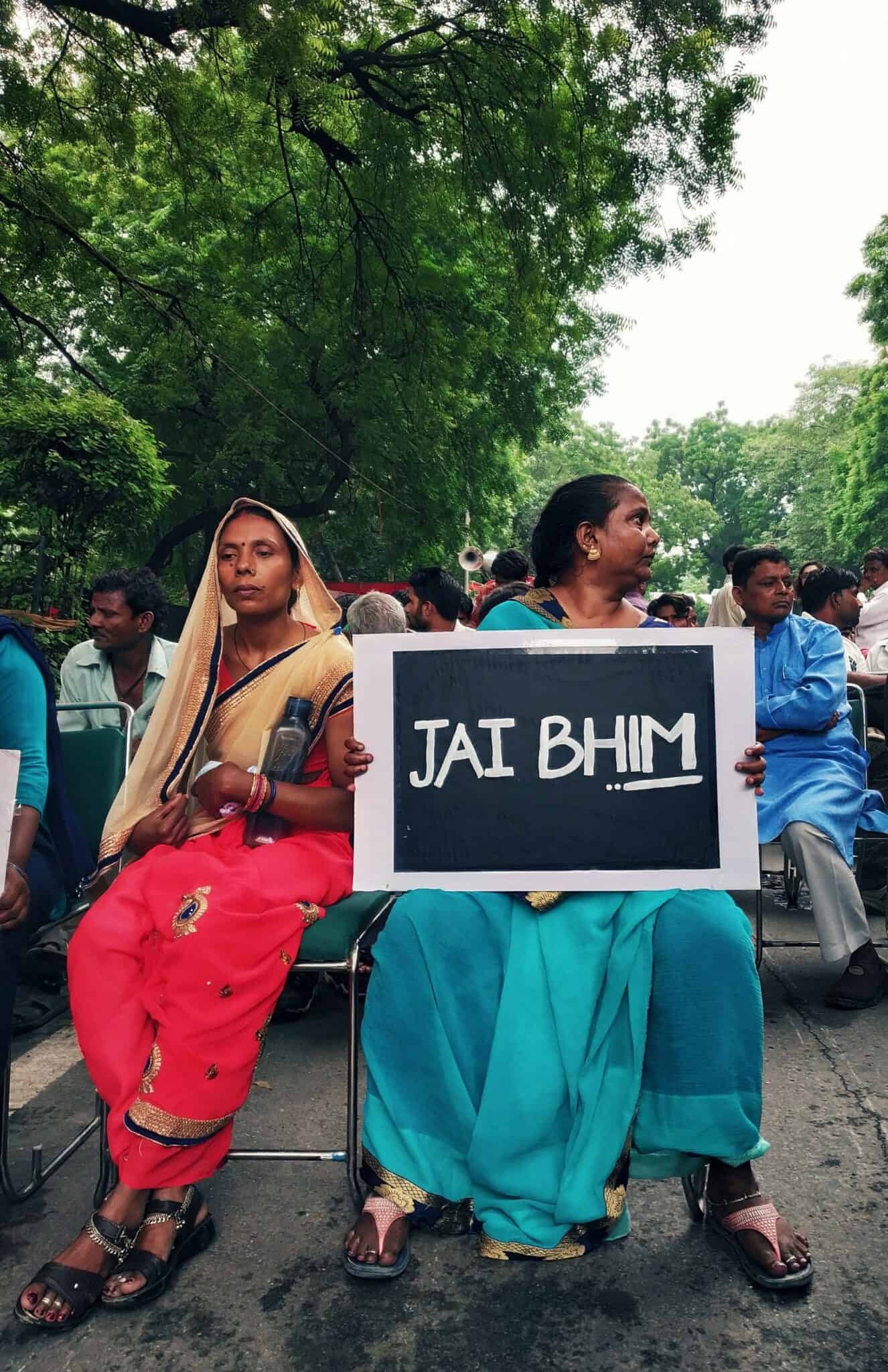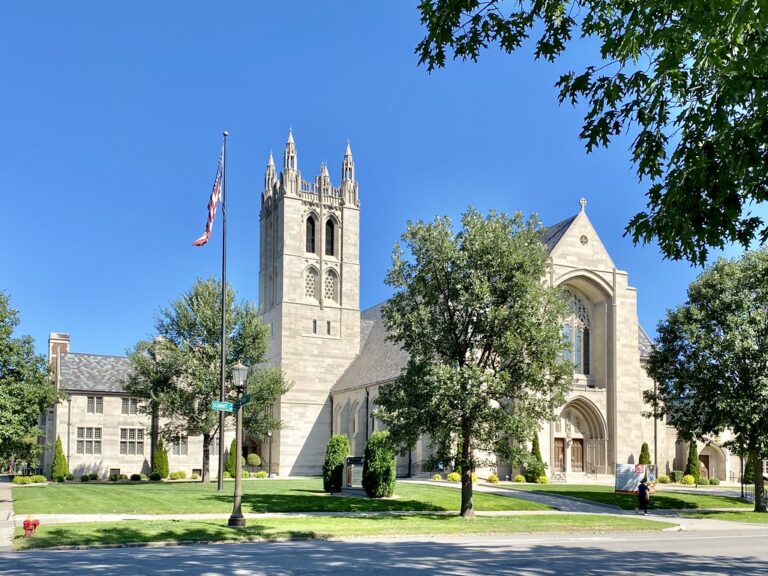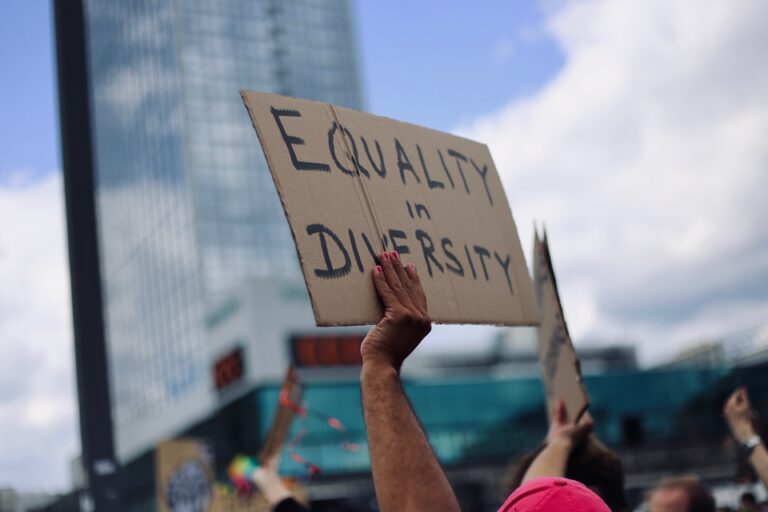Priya Kamath is a student at Harvard Law School.
This post is the first of a two-part series that addresses caste discrimination in American workplaces. Part I, below, discusses the history of the Indian caste system and how caste discrimination may surface in American workplaces. Part II describes where caste may fit in existing anti-discrimination doctrine, proposals for reform, and recent developments.
Setting the Scene
Between 2011 and 2021, over 200 Indian nationals immigrated to New Jersey on temporary religious R-1 visas. They had been recruited to build a multimillion-dollar temple run by members of the Hindu sect Bochasanwasi Akshar Purushottam Swaminarayan Sanstha, known as “BAPS.” A federal lawsuit filed last summer on behalf of those immigrants alleges that upon arrival, the R-1 visas that were the workers’ golden tickets to America turned to foil. The plaintiffs, who were promised paid jobs as masons and construction workers, were instead presented to the U.S. government as religious “volunteers.” But rather than performing religious labor, the R-1 visa holders were made to perform manual labor for over twelve hours a day, seven days a week, all while earning roughly one dollar per hour. The lawsuit, Kumar v. BAPS, Inc., further claims that BAPS forcibly confined the workers to temple grounds, confiscated their visas and passports, and prohibited them from speaking with visitors under threat of slashed wages and deportation.
The Indian workers BAPS conscripted have more in common than precarious immigration statuses and an inability to read or understand English: their caste. All of the laborers identify as oppressed caste. It is on this basis, they believe, that that BAPS intentionally targeted them for exploitation. Kumar isn’t the first case of its kind. In 2001, a Bay Area landlord was convicted of labor and sex trafficking as many as 99 oppressed-caste women and girls.
The following description of caste, developed by Brandeis University, is a helpful definition of the institution: “[c]aste is a system of rigid social stratification characterized by hereditary status, endogamy, and social barriers sanctioned by custom, law, or religion.” The Indian caste system, discussed here, is a paradigmatic example of the caste systems found globally.
The Indian Caste System
The Indian caste system emerged around 1,000 B.C. and is widely considered the world’s longest surviving social hierarchy. The Manusmriti, or “law code of Manu,” is a Hindu code of conduct that defined the duties of each caste. These castes are defined in the following order of status and privilege: Brahmins, the priests; Kshatriyas, the warriors; Vaishyas, the merchants; and Shudras, the menial laborers. The Manusmriti bestowed the privilege of learning and reciting sacred texts on the dominant castes alone and forbade Shudras from accumulating wealth.
Over time two additional groups were formed and considered to have the lowest status: Dalits and Indigenous tribes, also called Scheduled Castes and Scheduled Tribes, respectively. Dalits were tasked with performing so-called “unclean” jobs, like collecting garbage and clearing excrement. Dalit translates to “oppressed,” a self-chosen name for members of the caste who comprise a quarter of India’s population. Dalits were once derisively referred to as “untouchables.” Martin Luther King, Jr. once compared the subjugation of Dalits to that of Black Americans in a sermon, remarking that he and “every Negro in the United States of America [is] an untouchable.” Like race, caste is immutable and assigned at birth. Historically, this meant that members of oppressed castes — considered to be the Shudras, Dalits, and Scheduled Tribes — had virtually no opportunity for upward mobility.
Caste is an institution that stratifies labor and dictates the foundations of social standing, family relations, and political power. The Indian Constitution enshrined legal protections for the Scheduled Castes and Scheduled Tribes from its inception in 1950, including the world’s most comprehensive affirmative action system. However, present-day rates of poverty, hate crimes, and educational attainment evince the entrenchment of caste in Indian society.
A person’s caste generally remains identifiable by their last name. Other markers of caste may include: 1) dietary preference, as Brahmins are traditionally expected to be vegetarian while Dalits are permitted to eat beef; 2) religion, because Christian and Buddhist Indians are believed to have converted out of Hinduism to escape caste oppression; 3) the region in India one is from, because sub-castes vary regionally; and 4) skin color, with lighter skin seen as an indication of being dominant caste. Caste cannot be confined to a country’s borders. As Dr. Bhimrao Ambedkar, a Dalit known as the Father of the Indian Constitution, said in 1916, “if Hindus migrate to other regions on earth, Indian caste w[ill] become a world problem.”
Casteism in American Workplaces
Dr. Ambedkar’s prescience about caste is clear — where Indians have immigrated, caste can follow. This is especially evident in the American tech industry, where large numbers of employees are of Indian origin. In fact, it is not uncommon for Indian nationals at Big Tech companies to have known of or have gone to school with one another in India, given that such employers tend to recruit from the handful of ultracompetitive Indian Institutes of Technology (IITs). IIT students have reported being subjected to kholna, a hazing ritual conducted to determine classmates’ castes. Consequently, the caste hierarchy that defined classmates’ relationships in India may be reproduced in American workplaces.
In 2020, an engineer, referred to as John Doe in litigation, working in Silicon Valley for Cisco complained he was discriminated against as a Dalit by his two dominant-caste supervisors. All three were former classmates at IIT Bombay. Doe claims that after one of these supervisors recruited him to Cisco, he “outed” Doe as a Dalit to their team of Indian colleagues, all of whom are dominant caste. Doe’s supervisor did this by disparagingly calling Doe’s admission to IIT Bombay a result of India’s affirmative action program, which reserves a fraction of IIT seats for oppressed-caste students. After Doe confronted his dominant-caste supervisor about the harmful comment, he was refused a raise, denied professional opportunities, and found his workspace moved to physically isolate him from his team.
Cisco’s HR department didn’t intervene despite Doe’s internal complaints and, according to Doe’s lawsuit, defended its inaction after determining that caste discrimination is “not unlawful.” Doe’s suit, California Department of Fair Employment and Housing v. Cisco Systems, Inc., was the first federal lawsuit seeking to recognize caste as a protected class under Title VII before it was transferred to Santa Clara Superior Court.
Shortly after Cisco was filed, 30 oppressed-caste women software engineers at companies including Google, Apple, and Microsoft published a statement in the Washington Post describing the various forms of employment discrimination they have endured at the hands of dominant-caste supervisors in America, from unequal pay to sexual harassment. Simultaneously, the Dalit civil rights advocacy group Equality Labs announced it received over 250 complaints of caste-based harassment from Big Tech employees. These complaints alleged that dominant-caste employees use company appraisals, internal referrals, and peer reviews to create teams made up of networks of their choosing. Simultaneously, oppressed-caste workers report facing sabotage and seclusion. None of these oppressed-caste employees complained to their company’s HR departments. Like the blue-collar workers in Kumar, the Big Tech employees are largely temporary visa holders. Asserting statutory protections, let alone those that haven’t been legally settled, could jeopardize their immigration status. Potential avenues for legal redress are discussed in Part II.










Daily News & Commentary
Start your day with our roundup of the latest labor developments. See all
December 22
Worker-friendly legislation enacted in New York; UW Professor wins free speech case; Trucking company ordered to pay $23 million to Teamsters.
December 21
Argentine unions march against labor law reform; WNBA players vote to authorize a strike; and the NLRB prepares to clear its backlog.
December 19
Labor law professors file an amici curiae and the NLRB regains quorum.
December 18
New Jersey adopts disparate impact rules; Teamsters oppose railroad merger; court pauses more shutdown layoffs.
December 17
The TSA suspends a labor union representing 47,000 officers for a second time; the Trump administration seeks to recruit over 1,000 artificial intelligence experts to the federal workforce; and the New York Times reports on the tumultuous changes that U.S. labor relations has seen over the past year.
December 16
Second Circuit affirms dismissal of former collegiate athletes’ antitrust suit; UPS will invest $120 million in truck-unloading robots; Sharon Block argues there are reasons for optimism about labor’s future.